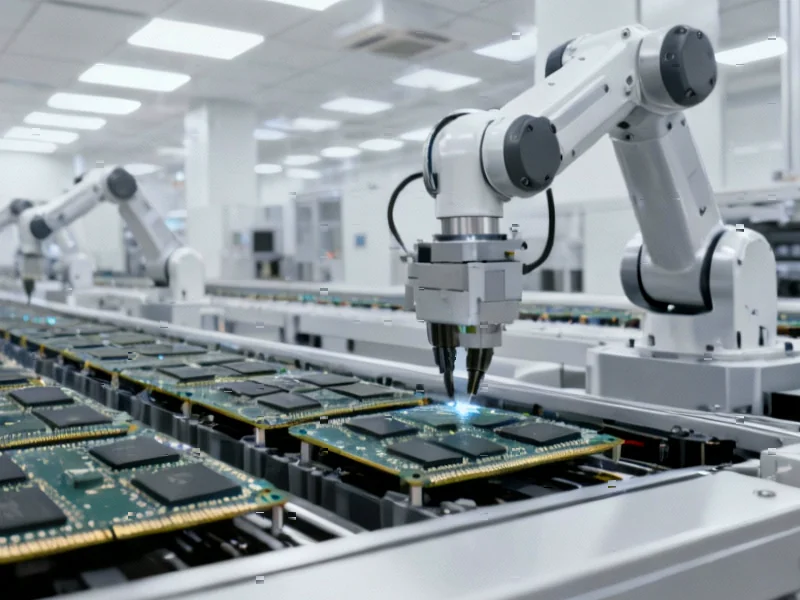According to CNBC, Singapore-based venture capital firm Antler founder Magnus Grimeland argues that AI is not in a bubble, citing rapid enterprise adoption and substantial revenue generation as key differentiators from the dotcom era. Grimeland noted that AI adoption is happening immediately across industries, from Indian healthcare providers to Fortune 500 companies, unlike the decade-long transition to cloud computing. He highlighted OpenAI reaching $10 billion in annual recurring revenue by June and portfolio company Lovable achieving $100 million ARR within eight months as evidence of real revenue backing the growth. Grimeland also pointed to consumer behavior shifts, with his personal Google search usage dropping from 100% to 20% within a year due to AI alternatives. This combination of factors suggests the current AI expansion has fundamentally different characteristics than previous technology bubbles.
The Technical Infrastructure Advantage
What fundamentally separates the current AI wave from the dotcom bubble is the underlying technical maturity. During the late 1990s, internet infrastructure was still primitive—dial-up connections, limited bandwidth, and basic web technologies constrained what companies could actually deliver. Today’s AI ecosystem builds upon decades of cloud computing development, sophisticated APIs, and mature deployment pipelines. The rapid scaling demonstrated by companies like Lovable isn’t magic—it’s leveraging existing cloud infrastructure that can instantly provision resources globally. This technical foundation means AI companies can deliver real value immediately rather than promising future capabilities that the infrastructure can’t yet support.
Enterprise Adoption Patterns Tell a Different Story
The speed of enterprise AI adoption reveals crucial differences from previous technology cycles. Unlike the dotcom era where companies struggled to justify internet investments with clear ROI, AI implementations are demonstrating measurable productivity gains from day one. Large enterprises aren’t just experimenting—they’re reallocating significant budgets from traditional software spending to AI solutions. This creates a sustainable revenue base that speculative dotcom companies never achieved. The critical distinction lies in AI’s ability to directly replace or augment existing workflows with measurable efficiency improvements, whereas many dotcom solutions required businesses to fundamentally rethink their operations without clear immediate benefits.
Revenue Quality Versus Hype Valuation
When examining whether we’re in a bubble, the quality of revenue matters more than the quantity. During the dotcom bubble, companies often reported revenue based on unsustainable practices—cross-funding between startups, barter arrangements, or heavily discounted initial contracts. Today’s leading AI companies are generating revenue from genuine enterprise customers with sustainable pricing models. More importantly, the revenue streams are diversified across industries and use cases, reducing dependency on any single market segment. This diversification creates a more resilient ecosystem less vulnerable to sector-specific downturns that characterized the dotcom collapse.
The Real Implementation Challenges
Despite the optimistic revenue numbers, significant technical and operational challenges remain that could separate sustainable AI companies from those riding the hype wave. Model inference costs remain substantial, data governance complexities are often underestimated, and integration with legacy systems presents non-trivial engineering hurdles. Companies that have scaled rapidly face the reality of maintaining performance while controlling costs—a balance that many dotcom companies never had to strike because they collapsed before reaching meaningful scale. The next 12-18 months will reveal which AI companies have built architectures that can scale efficiently versus those that are burning venture capital to acquire customers at unsustainable costs.
Indicators of Sustainable Growth
Looking beyond the headline numbers, several factors suggest this AI expansion has different characteristics than previous bubbles. The technology is being adopted across established industries rather than creating entirely new markets from scratch, providing a more stable foundation for growth. Additionally, the talent pool supporting AI development includes experienced engineers who lived through previous technology cycles and are applying those lessons to current business models. Perhaps most importantly, the customer acquisition costs for successful AI companies appear more rational than during the dotcom era, where companies spent disproportionately on marketing to capture mindshare without corresponding product maturity.




